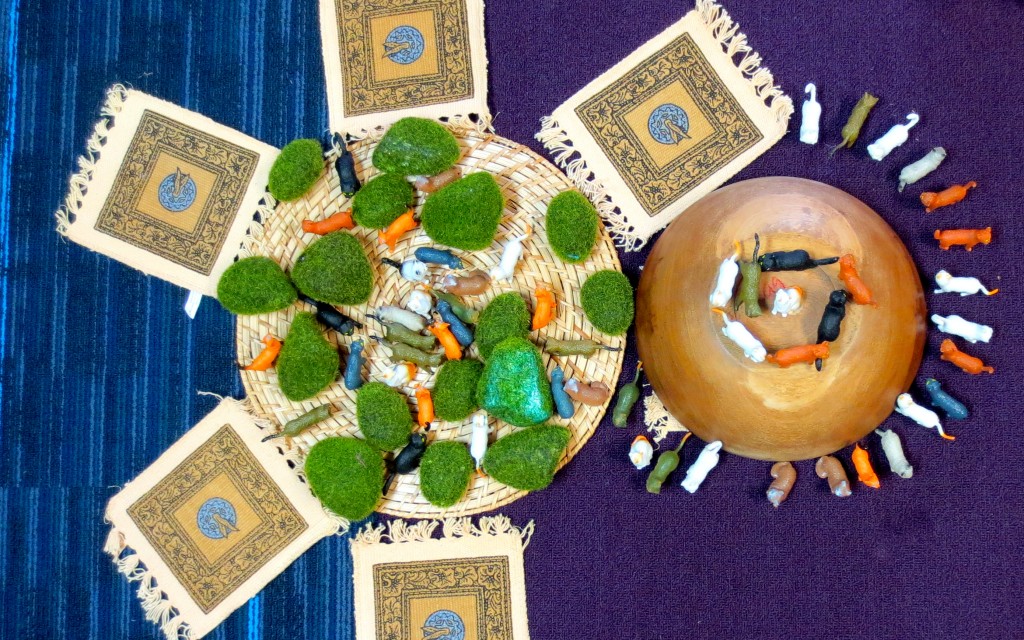A Place Where Everyone Knows Your Name
"Sometimes it is easy to make friends and sometimes it is hard," one of our kindergarten panelists whispered into the air directly in front of her. I wanted to compel the children to listen, "Children, get ready! Here IT ALL is!!! The secret to school and to life, even! Listen!" She told us something very important, but you had to listen carefully, because she herself is a person who does not take center stage, does not speak out or randomly. Rather, she carefully considers her words and actions before sharing, and these, in turn, are bold and true. This making friends thing from her perspective was something we could learn from. Listen!
She gave a few names as examples of people it was easy to make friends with and then she said others are harder and gave a third name. Later she told a story about how the group developed a game they called "bunnies and foxes" and how they had to agree upon a set of signals for the fox so that he would know the bunnies needed to take a break.
Hidden in these stories were some delicious bits. To begin, she herself was drawn to making friends with all the children, even those more resistant or difficult, or as she said later, "didn't know how to be a friend." She found a way to put to good use the skills we cultivate on our playground and shared them with a person who "was hard to make friends with" so he could play also. He was included and became essential to the game. And earlier, when asked about the "hard to make friends with" person, she shared that name in such a way that if you were listening just so, you could hear that child's story as well. Hers was a name that was said ALL-THE-TIME by the teacher.
After these visits, I check myself -- after the kindergarten panel visits, I think about how often I say a single child's name? And why? This happens most often during our circle meetings and story time and the names belong to the talkers, not so much the movers, we have fidgets and other options for the movers. It is the talkers. Not because I want children to stop talking, but because I want there to be room for other children and for myself-- those who need to gather and collect their thoughts to first speak into the air in front of them to have the time and space they need to contribute. I think this is a common theme with most teachers. They KNOW there has to be space provided for The Quiet, for both children and adults to be with the quiet and to give them room to think and speak themselves.
During our international staff meeting with Kierna Corr of Learning for Life, I shared this check-in/realization moment I had with the children's names and how those names are the first ones learned by the listeners -- it goes without saying that connected to these names is a "bad behavior" connotation and I wanted to fight against that in my own classroom. The talkers may not even hear their names after the first 10 (what feels like a billion) utterances, they live and breathe through their own voices and movement. It is so much wasted breath and to what end? This is the way they process the world around them and checking it has to be done as carefully as we would any other disposition. Kierna had just attended a workshop led by Michael Jones (talk4meaning) and she gave me this tip -- place your hand on the shoulder of the talker as needed. You can read her post about it here, The Planted Adult.
Now here is the thing that was quite interesting. By moving our mega-watt talkers next to me, because lo and behold, they would usually choose to sit across from me and next to their friends, it changed their view of the room and the realization that I was not in their centerfield vision. A lightbulb moment for us all. They, instead, were looking at their peers. It was a world view change. Then, every now and then, I would simply place a hand on their shoulders. One told me later that he decided to start talking in his head, which is interesting, because my thought immediately was that he should start listening in his head, but what do I know?
In the end, talking and listening in a group setting is, as any teacher will tell you, a delicate balance. In order to bring it into balance, begin with adjusting the central pillar, the teacher's perspective rather than individual and group dynamics. Are you distracted by movement or sound? What kind of talking holds value for you? Change the position of that pillar and not so much the weight in the pans, or more specifically, why continue to load in the heavy weights of names spoken and directions given?
We turn toward each other in groups, but still each need a space and place to make our own, room to breathe in to the moment. Our kindergarten panelist, found a space her own, shaping quiet and bold connections between children and by sharing her story, reconnected with me. Her room-to-breathe story brought a renewed appreciation for the talkers and the space-betweeners, which when put into simple practice, will be a gift that keeps on giving.

